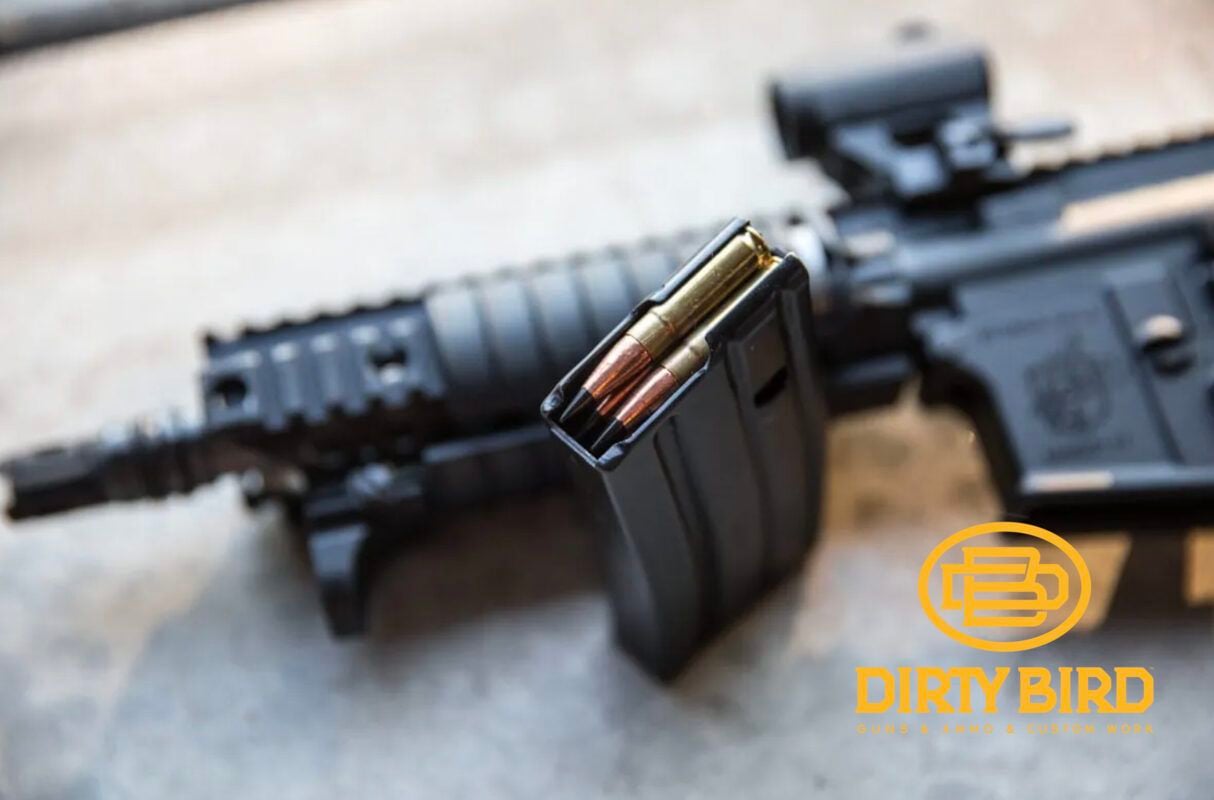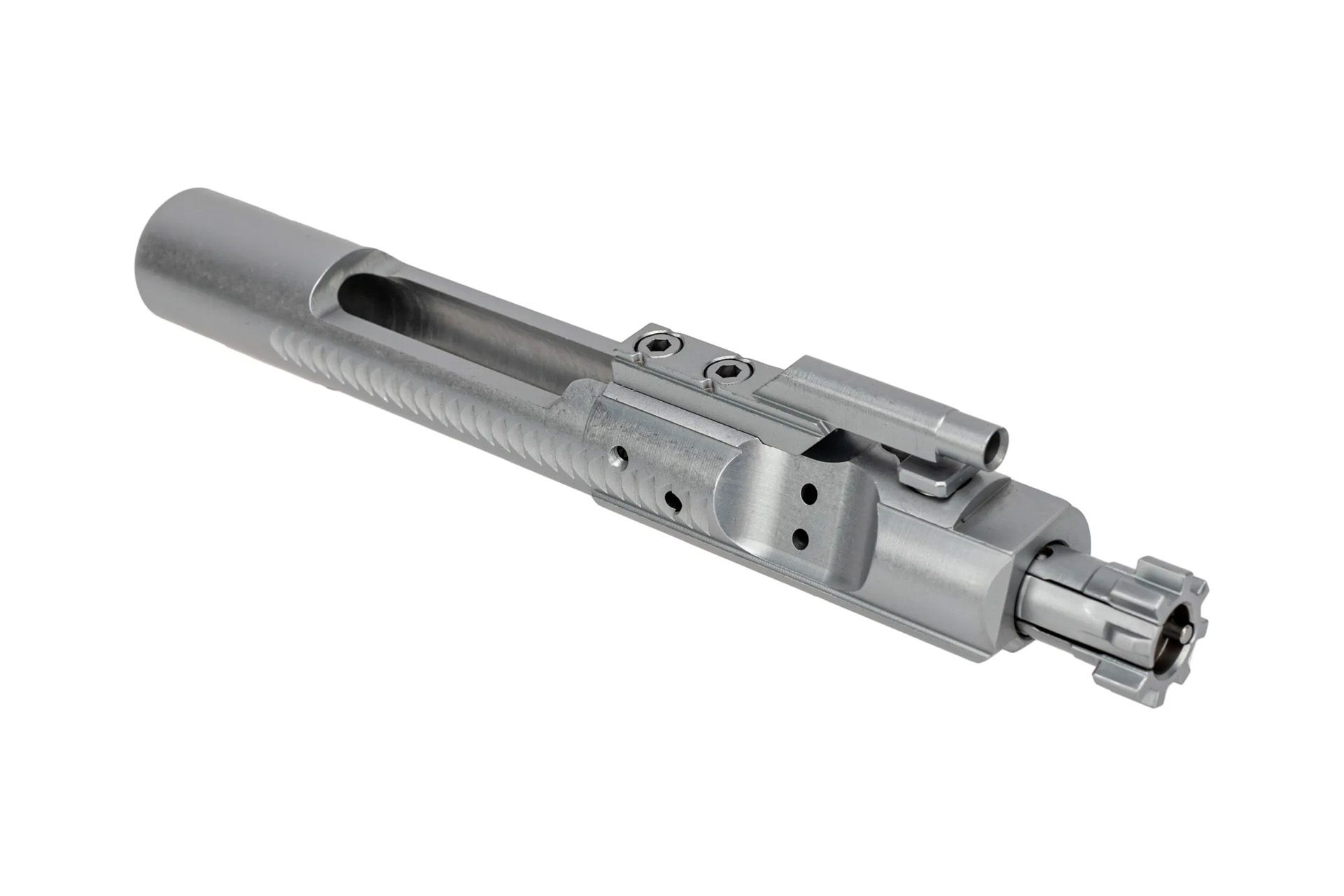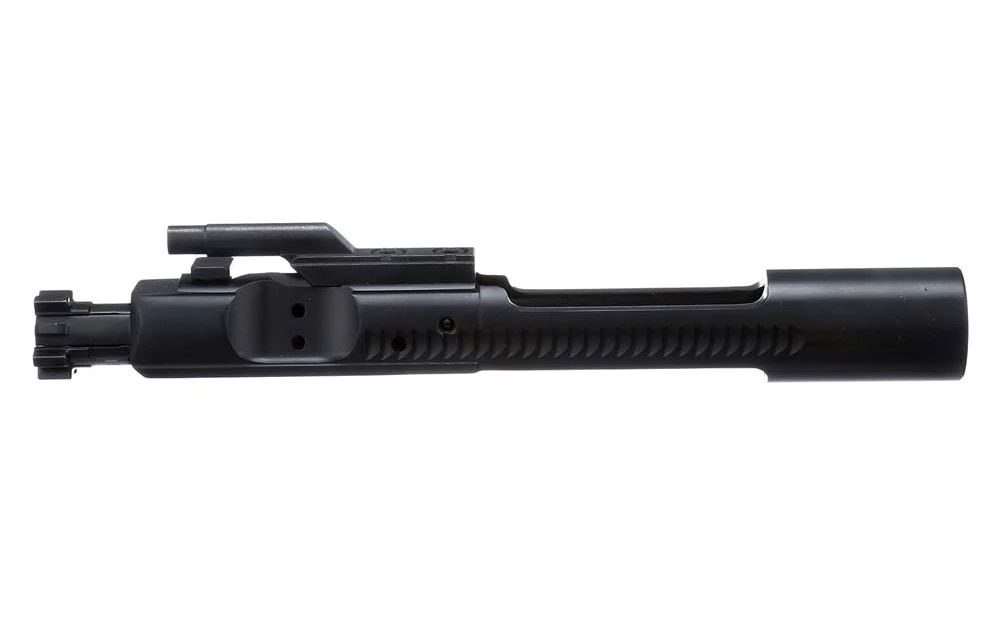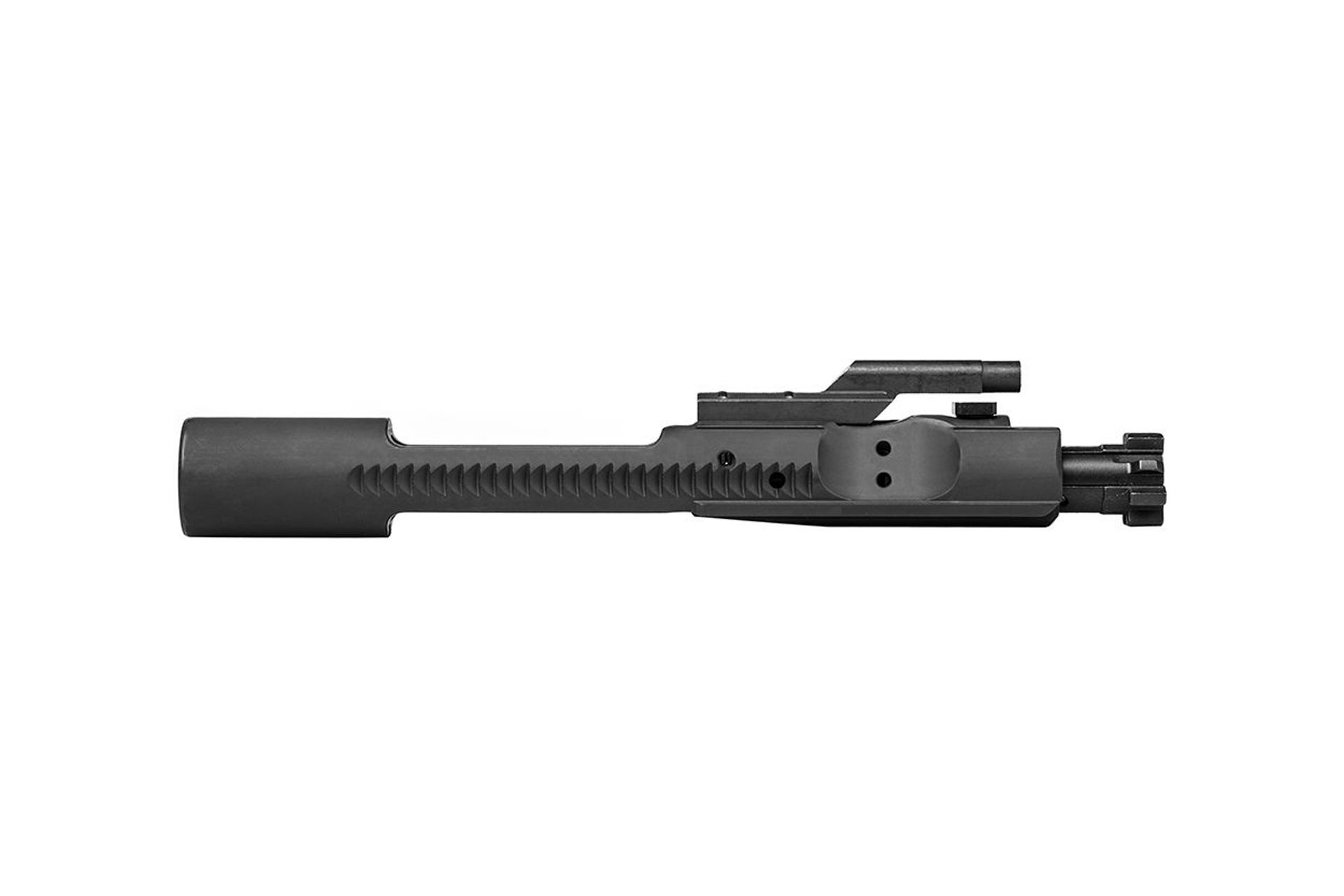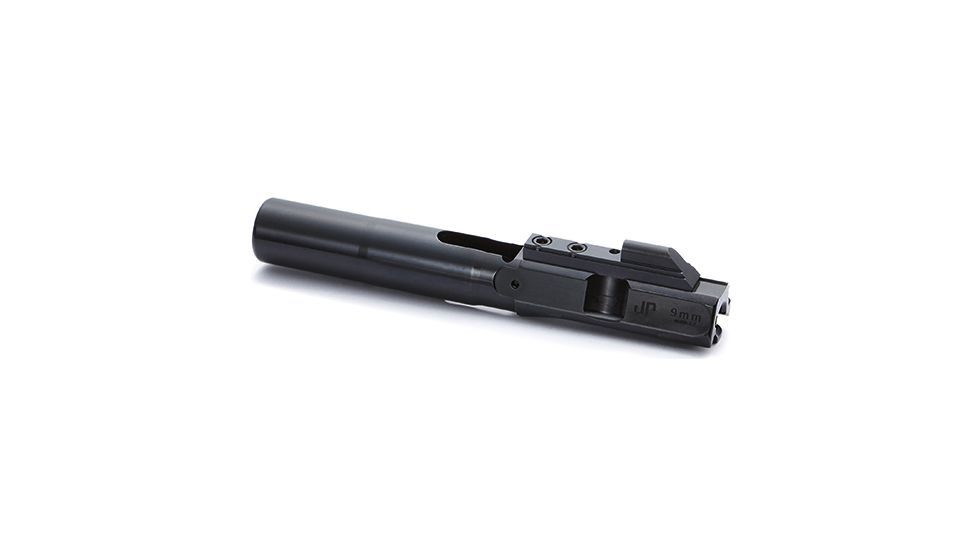Bolt carrier Groups
Building a 300 Blackout AR: Why the Bolt Carrier Group Matters
Building a 300 Blackout AR-15 is appealing for its simplicity. Unlike other caliber conversions, it only requires swapping out the barrel, thanks to the modularity of the AR platform. The rest of the upper receiver components, including the bolt carrier group, remain the same, as the 300 Blackout uses the same components as a 5.56 NATO AR, aside from the barrel. However, while this interchangeability simplifies the build process, selecting a high-quality BCG is critical to achieving optimal performance. The BCG and barrel together form the core of your rifle, driving reliability, cycling, and longevity. Let’s explore why the bolt carrier group is so vital, how it functions, and what makes a bolt carrier group for 300 Blackout essential.
Bolt Carrier Group Basics
The bolt carrier group is one of the most critical components of any AR-15, handling chambering, firing, extracting spent casings, and resetting the hammer. It’s a precise system of parts that must function smoothly for efficient rifle operation. Though the bolt carrier group for 300 Blackout is identical to the 5.56 BCG, the cartridge’s demands, especially in suppressed or subsonic setups, highlight the need for a high-quality bolt carrier group.
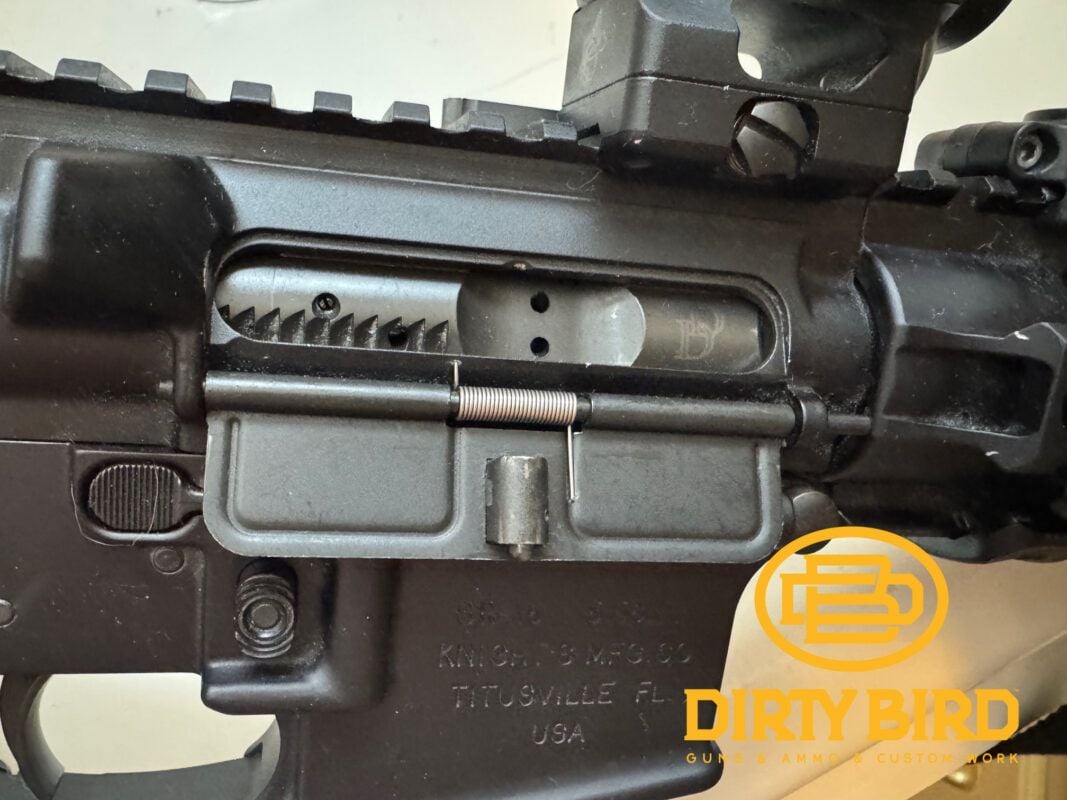
Key Components of the BCG
- Carrier: The external housing that supports the bolt and connects to the gas key. A sturdy carrier made from 8620 steel ensures durability under prolonged use.
- Bolt: The bolt locks into the barrel extension and handles crucial tasks like chambering and extracting rounds. Look for bolts made from Carpenter 158 or 9310 steel to withstand the pressures of 300 Blackout.
- Gas Key: Attached to the carrier, the gas key directs gas from the gas tube into the carrier. It’s essential for the key to be properly staked to prevent loosening.
- Firing Pin: This strikes the primer, igniting the cartridge. A high-quality firing pin reduces the risk of light primer strikes, which can be an issue with some 300 Blackout ammunition.
- Cam Pin: The cam pin guides the bolt into and out of battery. Its precise machining ensures smooth operation.
- Extractor and Ejector: These components ensure reliable feeding and ejection, which is particularly important when shooting suppressed or subsonic 300 Blackout loads.

Is a 300 Blackout Bolt Carrier Group the Same as 5.56?
Yes, a 300 Blackout BCG is interchangeable with a 5.56 BCG. Both calibers share the same case head dimensions, meaning the bolt face and extractor design are identical. This compatibility makes it easy to convert your rifle to 300 Blackout by swapping only the barrel. However, the unique operating conditions of 300 Blackout—particularly when running suppressed or using subsonic ammunition—can place additional stress on the BCG. For this reason, many builders opt for robust, full-auto-rated BCGs to ensure smooth cycling and reliability under varied conditions.
Materials and Finishes: What to Look For in a BCG
Selecting the best bolt carrier group for 300 Blackout requires careful attention to materials and finishes. The added versatility of 300 Blackout, which can switch between supersonic and subsonic rounds, places unique demands on the BCG.
Steel Types
- Carpenter 158: This mil-spec steel has been the standard for decades due to its exceptional strength and wear resistance. It’s a great choice for high-stress applications, including suppressed 300 Blackout setups.
- 9310 Steel: A modern alternative to Carpenter 158, 9310 offers superior fatigue resistance and durability, making it ideal for precision shooting or extended use.
- 8620 Steel: Commonly used for the carrier itself, this steel balances durability with cost-effectiveness.
Coatings and Finishes
- Nickel Boron: Known for its slick surface and corrosion resistance, this coating reduces friction and simplifies cleaning—a major benefit for 300 Blackout rifles used with suppressors.
- Black Nitride: This treatment hardens the steel and provides excellent corrosion resistance without the shiny appearance of Nickel Boron.
- Phosphate (Manganese): The classic mil-spec finish, phosphate is durable and affordable, making it a reliable choice for most builds.
- Chrome: While less common today, chrome coatings are extremely wear-resistant and easy to clean, offering proven performance for heavy-use rifles.
Why a Full-Auto BCG Is a Good Choice for 300 Blackout
Full-auto-rated bolt carrier groups, with their slightly greater mass, enhance cycling smoothness and reliability, particularly in suppressed 300 Blackout setups where backpressure is increased. Full-auto BCGs are also designed to handle the rigors of high-volume fire, making them an excellent choice for any AR-15 build, including 300 Blackout.
Stick with a Standard Bolt Carrier Group
When building a 300 Blackout AR, it’s tempting to experiment with lightweight or skeletonized bolt carrier groups for the sake of reducing weight or increasing cycling speed. However, these specialized designs often compromise durability and reliability, especially in a caliber as versatile as 300 Blackout. Standard, full-weight BCGs are better suited for handling the varied pressures of both subsonic and supersonic loads, as well as the increased backpressure from suppressors. A basic, well-made BCG offers the ruggedness and dependability needed for consistent performance across all shooting conditions, making it the superior choice for most builds.
Suppressed and Subsonic Considerations
The versatility of 300 Blackout—excelling in both suppressed and subsonic applications—is one of its greatest strengths. However, these setups can be demanding on the BCG. Subsonic rounds generate lower gas pressure, which can lead to short-stroking if the rifle isn’t tuned correctly. Similarly, suppressors increase backpressure, which can accelerate wear on poorly made components.
For these reasons, it’s critical to choose a BCG with high-quality materials and finishes. Nickel Boron or Nitride coatings paired with bolts made from Carpenter 158 or 9310 steel help ensure reliable performance. Regular maintenance and cleaning are also essential to prevent carbon buildup, which can be more pronounced in suppressed setups.
Popular Brands for 300 Blackout Bolt Carrier Groups
Several manufacturers produce bolt carrier groups specifically designed to meet the demands of 300 Blackout builds. Brands like Toolcraft, Aero Precision, and BCM are known for their high-quality components. For those seeking a premium option, companies like JP Enterprises and LMT offer BCGs with advanced materials and finishes, tailored for precision shooting or suppressed use. Dirty Bird Industries also provides excellent value with their phosphate and Nitride-coated BCGs.
Maintenance and Longevity
Properly maintaining your bolt carrier group is essential for the longevity and reliability of your 300 Blackout AR-15. Cleaning regularly, especially after using suppressed or subsonic ammo, prevents carbon buildup and reduces wear. Inspect the gas key, extractor, and bolt lugs for signs of wear or damage, and ensure that all screws are properly staked.
Final Thoughts
The bolt carrier group is the unsung hero of any AR-15, and this holds especially true for 300 Blackout builds. While it may share components with a standard 5.56 setup, the unique demands of 300 Blackout—from subsonic rounds to suppressed shooting—highlight the importance of selecting a high-quality BCG. By investing in a robust, full-auto-rated BCG with durable materials and finishes, you can ensure your rifle operates reliably and efficiently, no matter how you use it.
